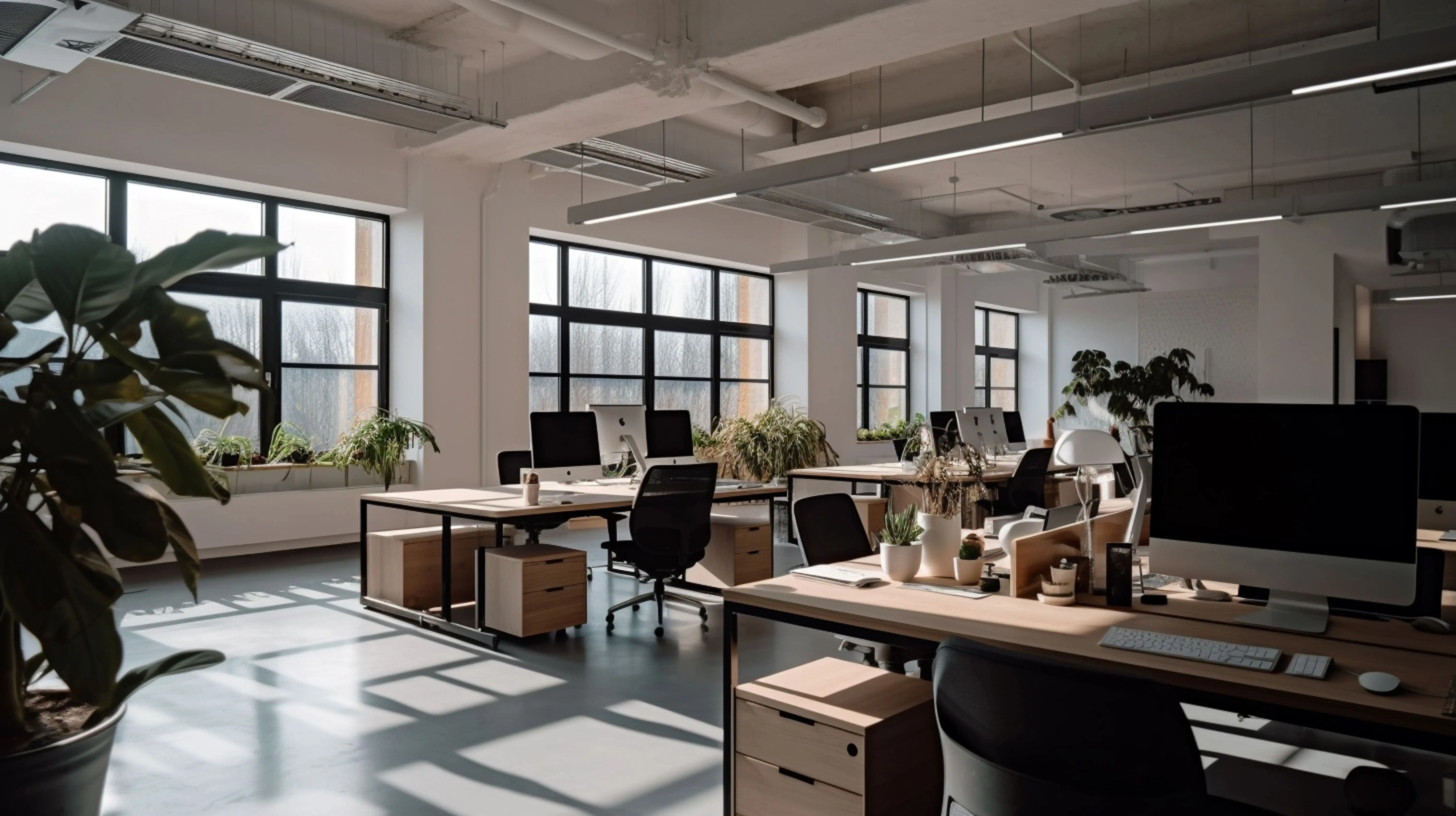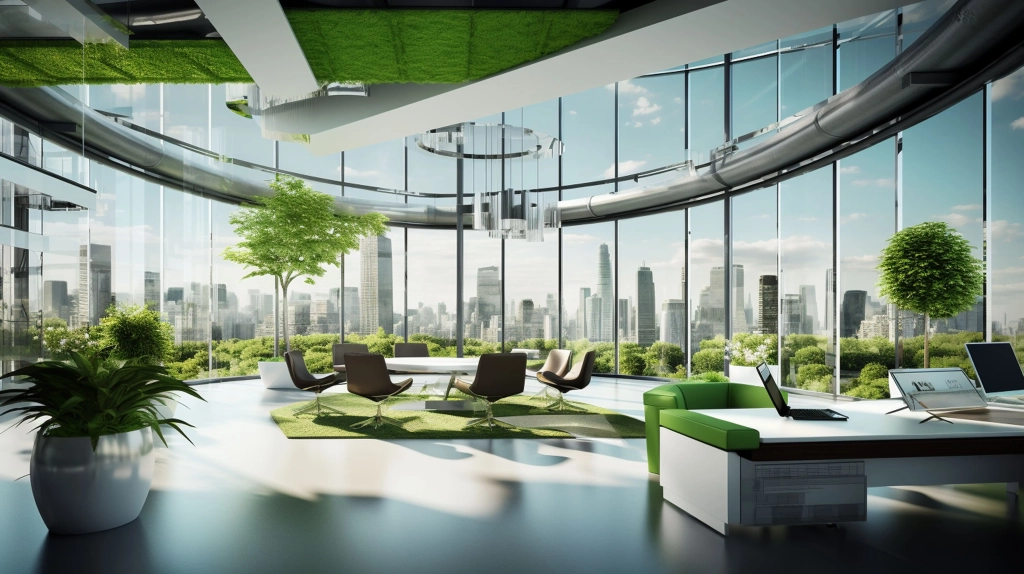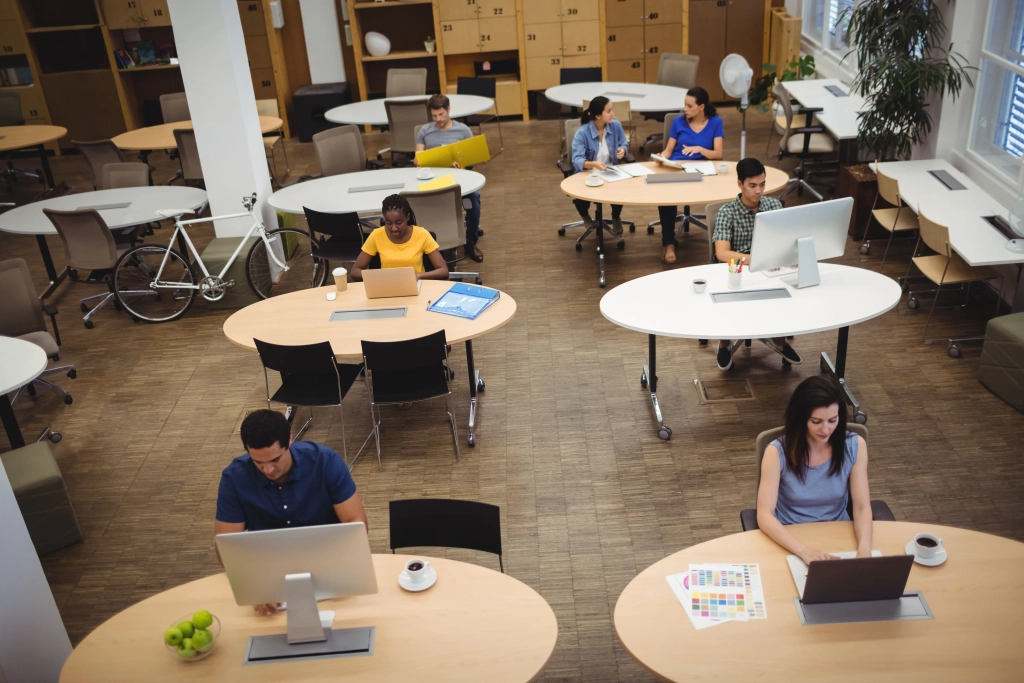Exploring the Post-Pandemic Status of Office Spaces in the Philippines

As the world grappled with the challenges posed by the COVID-19 pandemic, businesses, and office spaces in the Philippines faced unprecedented disruptions. The pandemic has reshaped the way we work, accelerating the adoption of remote work and pushing organizations to reimagine traditional office setups.
This article delves into the post-pandemic status of office spaces in the Philippines, exploring the changes, challenges, and opportunities that have emerged in this dynamic landscape.
RELATED: The Rise of Workspaces in Residential Developments: Live-Work Lifestyles

The Evolution of Office Spaces in the Philippines
The post-pandemic era has witnessed a significant transformation in office spaces across the Philippines. Companies have been compelled to reassess their strategies and create adaptable work environments to ensure employee safety and productivity.
Embracing Remote Work Culture
The pandemic forced a sudden shift to remote work, and businesses had to swiftly adapt to a virtual work culture. As employees demonstrated their ability to work efficiently from home, many companies adopted a hybrid work model, allowing employees to split their time between the office and home.

Redesigning Office Layouts
To comply with social distancing norms, offices have been redesigned to reduce density and maintain physical distancing. Flexible and open layouts have gained prominence to create a more agile and collaborative environment.

Focus on Employee Well-being
Employee well-being has become a top priority for organizations. Companies are investing in wellness programs, mental health support, and ergonomic office furniture to promote a healthier work-life balance.
Tech Integration for Seamless Collaboration
The integration of advanced technology has been crucial in facilitating seamless collaboration among remote teams. Video conferencing, cloud-based tools, and project management software have become essential for effective communication.
Sustainable and Green Initiatives
With increased awareness of environmental concerns, businesses are incorporating sustainable practices into their office spaces. Green initiatives such as energy-efficient lighting and waste reduction have become integral to office design.
The Rise of Co-Working Spaces
The post-pandemic scenario has seen a surge in demand for co-working spaces, especially among startups and freelancers. These shared workspaces offer flexibility, cost-effectiveness, and networking opportunities.

Flexibility for Startups
Co-working spaces provide an attractive solution for startups as they offer affordable rental options without the long-term commitments of traditional office spaces.
Collaborative Ecosystem
The collaborative nature of co-working spaces fosters a diverse community of professionals, encouraging knowledge sharing and networking.
Supporting Remote Workers
Co-working spaces cater to remote workers seeking a productive and professional environment outside their homes.
The Future of Traditional Office Spaces
While remote work and co-working spaces gain traction, traditional office spaces are far from obsolete. Instead, they are evolving to accommodate the changing needs of the workforce.
Hybrid Work Models
The future of office spaces in the Philippines is likely to be a hybrid model, offering a blend of remote work and in-office collaboration.
Agile and Adaptable Designs
Office spaces are becoming more agile and adaptable, allowing for easy reconfiguration based on the organization’s evolving requirements.
Enhanced Health and Safety Measures
Health and safety protocols will continue to be a priority, with offices implementing touchless technologies, air purification systems, and regular sanitization.
In the aftermath of the pandemic, health and safety have become paramount concerns for businesses and tenants. Commercial real estate properties are now expected to adhere to stringent health and safety protocols to ensure the well-being of employees and visitors. This includes implementing touchless technologies, improved ventilation systems, and regular sanitization measures. Properties that prioritize health and safety measures are likely to attract more tenants in the current climate.
Employee-Centric Amenities
To attract and retain talent, offices are incorporating employee-centric amenities such as recreational spaces, relaxation zones, and well-equipped cafeterias.
The Impact on Commercial Real Estate
The COVID-19 pandemic has left a profound impact on the commercial real estate sector in the Philippines, leading to significant shifts in demand, property requirements, and the overall landscape of office spaces. As businesses adapted to remote work and reevaluated their office space needs, the commercial real estate market underwent a transformation.
Shift in Demand
One of the most notable changes in the commercial real estate sector has been the shift in demand for office spaces. With remote work becoming more prevalent and companies adopting hybrid work models, the demand for large, traditional office spaces has decreased. Many businesses now require smaller, flexible spaces that cater to a blend of remote and in-office work. As a result, the commercial property market had to adjust its offerings to meet these new requirements.
Revamping of Commercial Spaces:
To respond to the evolving demands of businesses, commercial property owners and developers have been quick to adapt. Traditional office spaces are being redesigned and reimagined to accommodate flexible work arrangements and create modern, appealing work environments. The emphasis is now on creating agile spaces that can be easily reconfigured to suit the changing needs of tenants. Moreover, the integration of technology and smart office solutions has become crucial to attract modern businesses.
Reimagining Retail Spaces
The pandemic’s impact extended beyond traditional office spaces, leading to the reimagination of retail spaces. With the rise of remote work, many companies began exploring the conversion of underutilized retail spaces into co-working hubs or last-mile delivery centers. This dual-purpose utilization of commercial real estate has opened up new opportunities for landlords and investors, ensuring the efficient utilization of spaces that may have otherwise remained vacant.
Adapting to New Business Models
The transformation of office spaces in the post-pandemic era necessitates an adaptive approach to real estate management. Property owners and managers need to be agile in responding to the evolving needs of tenants and businesses. Leasing agreements and contracts are now being structured to allow for greater flexibility, accommodating short-term leases and providing the option for tenants to scale their space requirements based on their workforce needs.
Challenges and Opportunities
The post-pandemic impact on commercial real estate presents both challenges and opportunities. While the reduced demand for large office spaces may pose challenges to property owners, the increasing demand for flexible, modern spaces offers an opportunity to reimagine the use of commercial properties. Additionally, the rise of co-working spaces and the need for adaptable layouts create new avenues for investors and entrepreneurs to explore.
The post-pandemic status of office spaces in the Philippines reflects a paradigm shift in how we perceive work environments. Embracing remote work, co-working spaces, and agile office designs have become integral to the future of work. The evolution of office spaces continues to shape the commercial real estate landscape and offers both challenges and opportunities for businesses. By prioritizing employee well-being, integrating technology, and fostering innovative solutions, organizations can create resilient and thriving workspaces in the new normal.
Frequently Asked Questions (FAQs)
Can I continue working remotely even after the pandemic?
Yes, many organizations are embracing remote work as a permanent arrangement, offering employees the flexibility to work from home or in a hybrid model.
Are co-working spaces safe in the post-pandemic era?
Co-working spaces are implementing strict health and safety protocols, making them safe for use. However, individuals should follow recommended guidelines to protect themselves and others.
How can businesses ensure productivity in remote work setups?
To ensure productivity, businesses can establish clear communication channels, provide adequate resources, and set performance goals for remote employees.
What are the advantages of traditional office spaces?
Traditional office spaces offer a centralized and secure work environment, fostering in-person collaboration and team building.
How do businesses adapt office spaces for the hybrid model?
Businesses can invest in flexible furniture, create collaborative spaces, and implement technology for seamless remote collaboration.
Are sustainable practices costly for businesses?
While initial investments may be involved, sustainable practices can lead to long-term cost savings through energy efficiency and reduced waste.
Read more here: AllProperties Latest Blogs




